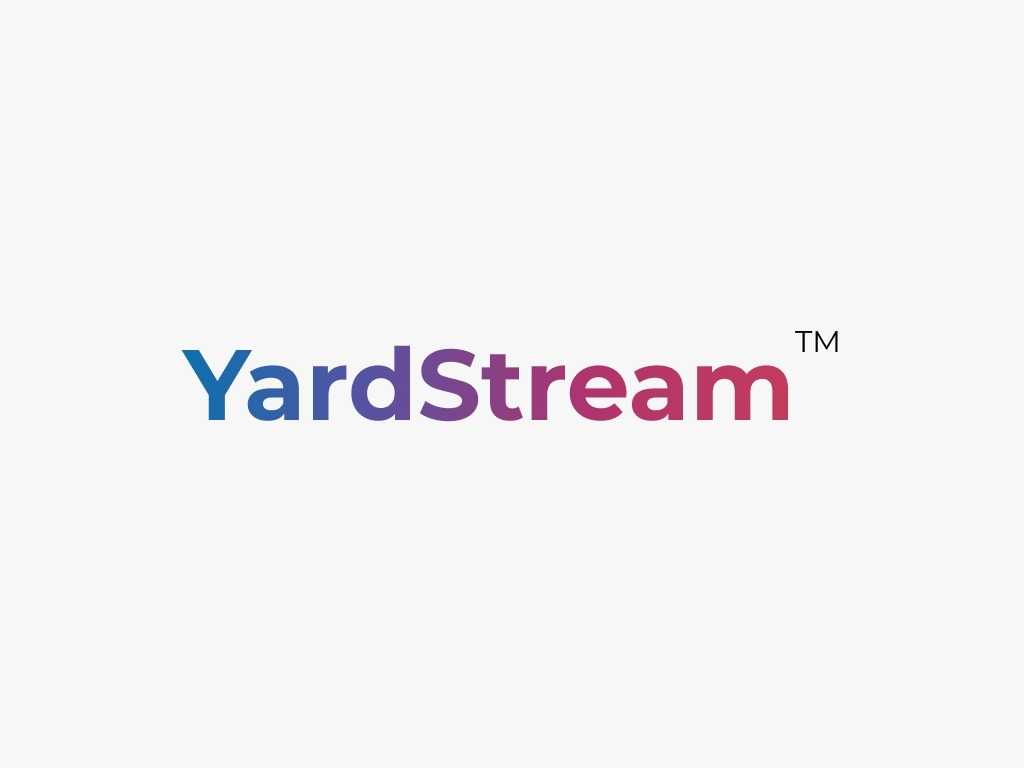Yes, most virtual meeting solutions can be used on numerous devices and platforms. These platforms are meant to be compatible with a variety of operating systems, including Windows, MacOS, iOS, and Android. They can also be accessible on a variety of devices, including laptops, tablets, and smartphones. Users can now join meetings from whatever device or platform they like, providing greater flexibility and convenience.
List of 20 Best Virtual Meeting Platform
Discover the remarkable video conferencing capabilities of WEVE. Our cutting-edge solution is designed to enhance your companys culture, productivity, and engagement through interactive virtual events and activities. From team building exercises to t...Read More Weve
Meetaverse is a option for enterprise-level metaverse solutions. Our advanced platform enables businesses to create tailored virtual environments for their teams and clients, fostering enhanced engagement and growth. From immersive worlds to improved...Read More Meetaverse
Blizz from TeamViewer solution for hassle-free group meetings. This powerful tool uses advanced AI technology to simplify scheduling and management of multiple meetings effortlessly. Enjoy features like live session recording, efficient screen sharin...Read More Blizz
vFairs is a web conferencing solution for seamless idea sharing and collaboration. This secure platform offers multi-lingual support and ensures secure data access for individuals, organizations, and business networks. Transform your virtual events,...Read More vFairs
Livestorm is a web conferencing and communication tool tailor-made for customer training webinars. This intuitive platform can be accessed on any device or browser, allowing for seamless hosting of webcasts, live events, and online courses. Livestorm...Read More Livestorm
VideoMeet is a high-quality video conferencing software that takes your online meetings, webinars, and conferences to the next level. Its user-friendly interface and advanced audio and visual features make communication smooth and seamless, whether i...Read More Videomeet
Immersively Care is a video communication solution for enhancing your interactions. Our advanced technology accurately measures emotions such as attention, interest, stress, pain, and fear, allowing you to connect more deeply and communicate more eff...Read More Immersively Care
Reactiv STAGE is the premier platform for seamless online collaboration. With Reactiv STAGE, hosts and participants can easily share visual data, annotate native files, and enhance overall engagement. Say goodbye to traditional virtual meetings and h...Read More Reactiv STAGE
YardStream - a virtual event management software that equips event planners with the necessary tools to seamlessly execute outstanding virtual events. With its user-friendly interface, customizable features, networking capabilities, and comprehensive...Read More YardStream
Welcome to 500Conference is a AI-powered video conferencing tool that revolutionizes collaboration and connectivity. Our secure virtual platform enables you to effortlessly share screens, chat in real-time, record meetings, and exchange files from an...Read More 500Conference
Meeting For Goals solution for eliminating unproductive meetings. Our innovative software empowers teams to align their meetings with company objectives, streamline agendas, delegate tasks and responsibilities, and ultimately maximize efficiency. Say...Read More Meeting For Goals
Whereby is a remote work solution that empowers you to hold meetings from anywhere. It boasts a convenient desktop sharing feature where team members can easily join in on meetings and communicate through chat, ensuring smooth collaboration. With Whe...Read More Whereby
Roundee solution for all your virtual meeting needs. With our all-in-one platform, you can enjoy advanced features such as cloud recording, custom URL meeting rooms, screen sharing, file transfer, timestamped notes, and chat, all completely free of c...Read More Roundee
Pexip is a highly-efficient, budget-friendly online conferencing solution that allows for seamless communication across multiple platforms. Our seamless platform guarantees top-notch audio and video quality for virtual meetings, while also maintainin...Read More Pexip
Lifesize is a video conferencing and cloud contact center system that enhances communication and collaboration for businesses of all types. It seamlessly integrates with popular platforms like Microsoft Teams, Zoom, and Google Meet, catering to the n...Read More Lifesize
BigMarker is a webinar platform perfect for contemporary meetings and virtual events. Our user-friendly interface provides interactive tools, smooth screen sharing, and recording options to keep you engaged with your participants. Our seamless integr...Read More BigMarker
UberConference is a video conferencing solution that simplifies collaboration. Experience effortless virtual meetings with smooth HD video and clear audio. Utilize advanced AI features, seamless integration with popular apps, and live transcription a...Read More UberConference
GatherInVR, a flexible platform designed to provide businesses and companies with the ultimate Virtual Reality meeting and conference experience. Our platform offers customizable solutions perfect for virtual meetings, seminars, and conferences. With...Read More GatherInVR
ON24 is virtual trade show platform that combines immersive virtual environments, interactive features, and social networking capabilities. Its robust reporting engine provides valuable data on the success of your virtual trade shows. Enhance your tr...Read More ON24
Google Hangouts is a communication solution that effortlessly connects across all your devices. With the ability to start a chat on your computer and seamlessly continue on your phone or tablet, stay in touch with loved ones and colleagues wherever y...Read More Google Hangouts
Learn More About Virtual Meeting Platform
- What Is Virtual Meeting Platform?
- What Are The Recent Trends In Virtual Meeting Platform?
- Benefits Of Using Virtual Meeting Platform
- Important Factors To Consider While Purchasing Virtual Meeting Platform?
- What Are The Key Features To Look For In Virtual Meeting Platform?
- Why Do Businesses Need Virtual Meeting Platform?
- How Much Time Is Required To Implement Virtual Meeting Platform?
- What Is The Level Of Customization Available In Virtual Meeting Platform?
- Which Industries Can Benefit The Most From Virtual Meeting Platform?
- Conclusion
What Is Virtual Meeting Platform?
A virtual meeting platform is a web-based software or application that enables users to hold virtual meetings, conferences, and webinars. These systems provide a variety of services, including video conferencing, screen sharing, document sharing, chat, and more, to enable users to communicate and collaborate seamlessly. Virtual meeting platforms minimize the need for in-person meetings and offer a convenient and cost-effective solution for organizations and individuals.
One of the primary advantages of using a virtual meeting platform is the ability to communicate with people in different locations, making it an excellent choice for remote teams or firms with global operations. These platforms also include strong security features to safeguard the safety and privacy of the conference. When choosing a virtual meeting platform, there are various variables to consider.
First and foremost, the platform must be dependable, with stable internet connections and minimal disturbances. Furthermore, the platform should have an easy-to-use interface and be compatible with a wide range of devices to accommodate a diverse group of players. Another important thing to consider is the platform's cost. Some virtual meeting platforms provide a free basic plan with restricted functionality, while others charge a subscription fee to access premium services. It is critical to compare features and pricing to determine which platform is best for your needs and budget.
What Are The Recent Trends In Virtual Meeting Platform?
Virtual meeting platforms have grown in popularity in recent years, particularly as distant work and virtual collaboration become more common. As technology advances, these platforms evolve and add new features that improve the entire meeting experience.
We will look at the most recent trends in virtual meeting platforms that you should keep in mind when making a purchase decision.
1. Integration With Other Tools: One of the most significant trends in virtual meeting platforms is the integration of additional tools and applications. In today's fast-paced corporate world, efficiency is essential, and having all of your tools in one location can significantly boost productivity. Many virtual meeting platforms now have interfaces with project management software, document sharing tools, and virtual whiteboards. This provides for a smooth transition between jobs while eliminating the need to transfer between platforms.
2. Artificial Intelligence: Another rising trend in virtual meeting platforms is the use of artificial intelligence (AI) technology. AI-powered virtual meeting platforms can automatically transcribe meetings, provide meeting summaries, and even recommend follow-up tasks based on the meeting agenda. This not only saves time, but also guarantees that all critical information is gathered and readily available.
3. Enhanced Security Features: With the increase of virtual meetings, security has become a key problem. As a result, many virtual conference platforms now include advanced security features including end-to-end encryption and password protection. These features ensure that sensitive information disclosed during meetings remains secure and private.
4. Immersive UX Virtual: meeting platforms are continually enhancing their user experience by introducing interactive elements such as 3D virtual surroundings, AR/VR tools, and customisable avatars. These elements make meetings more engaging and assist to recreate the experience of a face-to-face meeting, even when participants are located all over the world.
5. Mobile-Friendly Platforms: As more people work remotely or on the road, mobile-friendly virtual meeting platforms are becoming increasingly important. This implies that users can attend meetings using their smartphones or tablets, making it easier to work with colleagues or clients while on the go.
6. Increased Customisation: Virtual meeting platforms are becoming more customisable to fit the specific requirements of various industries and organisations. They now provide a variety of tools and templates that allow customers to customise their meeting experience, making virtual meetings more successful and efficient.
Benefits Of Using Virtual Meeting Platform
Virtual meeting platforms have become indispensable tools for businesses seeking to optimise their communication and collaboration processes, particularly in today's digital age, where remote work is becoming more common. These platforms provide numerous benefits to organisations of all sizes, making them a worthwhile investment for any buyer.
Here are some of the major advantages of using a virtual meeting platform.
1. Convenient And Flexible Communication: Virtual meeting platforms allow users to connect and interact from anywhere in the world and at any time. This makes it an ideal choice for firms with worldwide teams or remote employees who may not always be in the same physical location. Furthermore, these platforms provide a variety of services such as screen sharing, file sharing, and real-time messaging, which make communication and collaboration more efficient and smooth.
2. Cost-Effective Solution: Virtual meeting platforms reduce the need for travel, saving organisations significant money on transportation and lodging expenditures. This is especially useful for small firms or startups with limited resources because it allows them to communicate with clients, partners, and staff without paying large costs.
3. Increased Productivity: Traditional meetings can be time-consuming, since participants must go to a physical venue and deal with any delays or technical difficulties. Virtual meeting platforms, on the other hand, save time and boost productivity by allowing meetings to be held remotely, eliminating logistical hurdles.
4. Improved Collaboration: Virtual meeting platforms provide real-time collaboration, allowing numerous users to work on the same document or project concurrently. This not only increases efficiency, but also encourages teamwork and creativity because participants can readily share ideas and provide comments.
5. Improved Client Relations: Virtual meeting platforms provide a more personal and interactive approach to engage and communicate with clients than emails or phone calls. This can assist strengthen client relationships and increase overall consumer satisfaction.
6. Seamless Integration: Many virtual meeting systems integrate with various corporate tools and apps, including project management software, CRMs, and email platforms. This enables for a more efficient process because all communication and collaboration can occur on a single platform.
Important Factors To Consider While Purchasing Virtual Meeting Platform?
Purchasing a virtual meeting platform can be a daunting endeavour, especially with the abundance of options on the market. As businesses transition to virtual meetings and remote work, having a dependable and effective virtual meeting platform is critical.
To ensure you make the greatest purchase decision for your organisation, here are some crucial aspects to consider when choosing a virtual meeting platform.
1. Features And Functionality: When evaluating a virtual meeting platform, it is critical to assess the features and functionality it provides. Basic features to check for include screen sharing, recording, and chat capabilities. However, analyse your individual requirements and search for extra capabilities like whiteboarding, polling, and interaction with other tools.
2. Usability: Both the host and the guests should find a virtual meeting platform easy to use. Setting up and attending a meeting should not need technological expertise. Look for platforms with a straightforward and intuitive layout, as well as comprehensive tutorials or training to help users utilise the platform with ease.
3. Compatibility: Make sure the virtual meeting platform you choose is compatible with the devices and operating systems used by your team and clients. This will ensure smooth communication and avoid any technological issues.
4. Security And Privacy: Security and privacy are important considerations while conducting virtual meetings. Look for a platform that includes end-to-end encryption, secure login, and data privacy protections. Password protection and waiting rooms are two more tools that can improve the security of your meetings.
5. Scalability: When choosing a virtual meeting platform, consider your organization's future development. Look for systems that can handle a bigger number of participants and have the ability to add new features and users as your requirements change.
6. Customer Support: The virtual meeting platform provider must give reliable customer support. Look for platforms that provide 24-hour customer care and a specialised support team to help with any technical issues or questions.
7. Cost: Virtual meeting platforms exist in a variety of price points. Consider your budget and compare the prices of different platforms to see which one provides the best value for money. Keep in mind that certain platforms may charge additional fees for specific features or a bigger number of guests.
What Are The Key Features To Look For In Virtual Meeting Platform?
When looking for a virtual meeting platform, there are a few crucial aspects to consider in order to have a good and effective virtual meeting experience. These elements are critical for ensuring that your meetings run smoothly and that all attendees are completely engaged and collaborative.
1. Video Conferencing Capabilities: One of the primary goals of a virtual meeting platform is to enable face-to-face communication even when participants are physically separated. Look for a platform that provides high-quality, dependable video conferencing with the option to display numerous participants at once.
2. Screen Sharing: In a virtual conference, it is critical to be able to share presentations, papers, and other visuals with participants. A good virtual meeting platform should provide easy and seamless screen sharing, allowing all participants to follow along and contribute to the discussion.
3. Chat And Messaging Features: In addition to audio and video communication, a virtual conference platform should offer chat and messaging services. This enables participants to interact in real time, ask questions, and contribute links or documents without disrupting the main topic.
4. File Sharing: In addition to screen sharing, a virtual meeting platform should allow participants to share files directly with each other. This is especially useful for sharing larger documents or presentations that would take too long to deliver using screen sharing.
5. Mobile Compatibility: With more individuals working remotely and on the go, having a virtual meeting platform that works with mobile devices is critical. Look for a platform that offers a user-friendly mobile app or is accessible via a mobile web browser.
6. Recording And Playback: One valuable feature for virtual meetings is the option to record the session and preserve it for future reference or for those who were unable to attend. Look for a platform that includes this functionality and enables for simple retrieval and playing.
7. Customisation Options: When it comes to virtual meetings, every organisation has unique requirements and preferences. Look for a platform that offers customisation features such as branding, customisable backdrops, and the opportunity to create several user profiles.
8. Security And Privacy: In virtual meetings, security and privacy are critical, especially when sharing sensitive material. Look for a platform that has end-to-end encryption and other security features to protect the safety of your meetings.
9. Integration With Other Resources: Virtual meeting platforms often integrate with other resources including project management software, note-taking apps, and team communication tools. This can help to streamline your workflow and make meetings more productive.
10. User-Friendly Interface: Finally, a decent virtual meeting platform should have an easy-to-use and understandable interface. Look for platforms that provide demonstrations or trials so you can try the interface and determine whether it matches your requirements.
Why Do Businesses Need Virtual Meeting Platform?
Virtual meeting platforms have become indispensable tools for businesses in today's fast-paced and interconnected world. As the popularity of remote work grows, efficient communication and collaboration become increasingly important. Virtual meeting platforms provide a practical and cost-effective way to bridge physical divides and connect teams, clients, and stakeholders from all over the world.
One of the primary reasons why organizations require virtual meeting platforms is to facilitate and streamline communication. With features such as HD video conferencing, screen sharing, and VoIP calling, these platforms offer a face-to-face engagement experience that promotes improved comprehension and productivity. Furthermore, these platforms include real-time messaging and document sharing, enabling teams to connect and collaborate on projects more efficiently.
In addition to communication, virtual meeting platforms help firms save money on travel and time. Instead of spending substantial resources on transportation and lodging, virtual meetings can bring teams together in a virtual environment, saving both time and money. This is especially useful for businesses with remote or foreign teams because it reduces the inconvenience and cost of travel.
Furthermore, virtual meeting platforms provide a safe and centralized environment for hosting meetings. End-to-end encryption and password protection enable enterprises to ensure the confidentiality and privacy of their interactions and data. This is especially critical for sensitive discussions and meetings that involve confidential material.
In addition to internal communication, virtual meeting platforms allow organizations to engage with clients, consumers, and partners from all over the world. This broadens their reach and facilitates the formation of strong relationships free of physical limits. Overall, virtual meeting platforms help firms improve communication and cooperation, save time and resources, assure security, and broaden their worldwide reach. With so many options on the market, organizations should carefully analyze their individual requirements and select the virtual meeting platform that best fits their demands and budget.
How Much Time Is Required To Implement Virtual Meeting Platform?
The time required to establish a virtual meeting platform varies based on various aspects, including the size of the organisation, the number of users, and the features and customisation choices selected. On average, the installation procedure can last from a few days to several weeks. Before beginning the deployment process, it is critical to establish the aims and objectives of using a virtual meeting platform, as well as identify the organization's specific demands and requirements.
This will help you select the best platform and streamline the installation process. The next step is to choose an appropriate virtual meeting platform and discuss implementation with the supplier. To ensure a seamless installation process, you must first comprehend the platform's features and capabilities. After selecting a platform, the implementation phase can begin.
This often includes creating user accounts, connecting current communication tools, training personnel, and tailoring the platform to the organization's specific requirements. The duration of this process is determined on the platform's complexity and the level of customisation required. For a small organisation with a few users, the implementation procedure can be completed in a matter of days.
However, larger organisations with a wider user base may require several weeks to completely integrate the virtual meeting platform. It is important to note that effective planning, clear communication with the provider, and dedicated personnel can all have a substantial impact on implementation time. It is also recommended to include key stakeholders and employees in the deployment phase to guarantee a smooth transition and acceptance of the virtual meeting platform.
What Is The Level Of Customization Available In Virtual Meeting Platform?
When it comes to virtual meeting platforms, customisation is critical to providing a seamless and personalised experience for both users and audiences. The level of customisation offered by virtual meeting platforms varies based on the platform and its features. However, most virtual meeting platforms include extensive customisation possibilities to accommodate the varying needs of various businesses and organisations.
Starting with the basics, virtual meeting platforms typically allow users to personalise their meetings and webinars using their company logo and colours. This not only gives a professional appearance and feel, but it also helps to promote brand identity. Many platforms additionally include customisable registration pages with additional fields to capture essential information from participants.
Moving on to the actual meeting or webinar interface, most virtual meeting platforms provide a number of choices for customising the layout and settings to match individual needs. This includes the ability to resize and rearrange different screen elements, such as video streams, chat boxes, and presentation slides. Some platforms also allow users to add a visual touch to their meetings by selecting from a variety of pre-designed backgrounds or uploading their own background photos.
In addition to visual customisation, virtual meeting platforms allow attendees to customise their meeting experience. This may contain capabilities such as the option to mute and unmute players, select who can share their screen, and enable or disable the chat function. Some systems even include additional features for creating breakout rooms for smaller group conversations and managing the main conference arrangement.
When it comes to virtual events, the customisation options are even more broad. Many platforms include functionality for creating a virtual event lobby with interactive elements like sponsor booths, agendas, and networking possibilities. This not only makes the event more professional, but it also helps to engage attendees and create a memorable experience.
Which Industries Can Benefit The Most From Virtual Meeting Platform?
Virtual meeting platforms are becoming increasingly popular as firms around the world adopt remote work practices. These systems make it easier and more successful for teams to collaborate, communicate, and have virtual business meetings. While virtual meeting platforms have proven effective in a variety of businesses, some may benefit more than others.
Let's look at which industries will gain the most from a virtual meeting platform.
1. Education: The education industry has undergone a substantial change towards online learning, particularly in the aftermath of the COVID-19 pandemic. A virtual meeting platform can be a useful tool for educators, allowing them to hold interactive virtual classes, remote lectures, and individual tutoring sessions. These platforms also allow students to work together on group projects and engage with their peers and teachers, resulting in a seamless virtual learning experience.
2. Healthcare: The healthcare industry has recently had to adjust to remote work practices, and virtual meeting platforms have played an important role in this transformation. These systems allow healthcare professionals to schedule telemedicine appointments, share medical records, and discuss treatment plans with patients. This has not only made healthcare more accessible, but it has also enabled improved communication and coordination among healthcare providers.
3. Sales And Marketing: Virtual meeting platforms can substantially benefit sales and marketing professionals by allowing them to conduct virtual meetings with clients and prospects from anywhere in the world. These platforms have become indispensable for establishing and maintaining client contacts, delivering product demonstrations, and holding webinars or conferences. Furthermore, the real-time interaction capabilities of virtual meeting platforms enable more dynamic and successful sales presentations.
4. Human Resources: The human resources (HR) department is essential in any organization, and virtual meeting platforms have made their job considerably easier. HR professionals can use these platforms to perform virtual interviews, onboarding, and training. HR can use virtual meetings to guarantee compliance with business standards and give a more effective manner of documenting employee performance and ratings.
5. Non-Profit Organizations: Because non-profit organizations frequently engage with volunteers and funders in different areas, virtual meeting platforms can be an effective tool for communication and coordination. These platforms can help with internal team meetings, volunteer training sessions, and donor presentations. They also help non-profits access a larger audience through virtual events, fundraising drives, and virtual conferences.
Conclusion
To summaries, selecting the best virtual meeting platform for your company or organization is critical in today's fast-paced, digital environment. It enables seamless communication, cooperation, and productivity among team members, clients, and partners, regardless of their geographic location. When selecting a virtual meeting platform, consider elements such as simplicity of use, dependability, security, functionality, and pricing.
It is also critical to examine your individual requirements and priorities to ensure that the platform you select corresponds with your goals and objectives. Zoom, Microsoft Teams, Google Meet, and Cisco Webex are some of the most popular virtual conference platforms available today. Each of these platforms has distinct features and benefits, so it's critical to examine them and decide which one best meets your needs.
Furthermore, it is critical to assess the technical support and customer care supplied by the virtual meeting platform supplier. This is especially critical when dealing with technical concerns or requiring assistance in using the platform. Finally, by carefully analyzing your requirements, evaluating your options, and making an informed decision, you may discover the ideal virtual meeting platform to improve communication, collaboration, and productivity in your company or organization. We hope this buyer's guide has provided you with useful information and direction as you seek for a virtual meeting platform.
Virtual Meeting Platform FAQ's
Can Virtual Meeting Platform Be Accessed Across Multiple Devices And Platforms?
Is Virtual Meeting Platform Future-Proof And Adaptable To Emerging Technologies Like AI, Blockchain Or IoT?
Yes, virtual meeting platforms are always evolving and adapting to new technologies such as artificial intelligence, blockchain, and IoT. This ensures that they are future-proof and can meet the evolving needs of enterprises.
These platforms include advanced capabilities such as real-time language translation, virtual whiteboards, and facial recognition to improve the user experience. With the incorporation of these technologies, virtual meeting platforms become more efficient and versatile, resulting in a seamless and productive virtual collaboration experience.
Is There A Free Trial Offered To Assess Virtual Meeting Platform Before Committing?
Yes, several virtual meeting platforms provide a free trial period in which customers can evaluate the platform before committing to a paid subscription. This enables consumers to test the platform's functionality, interface, and general user experience before making a decision.
Some platforms provide a limited free trial with restricted features, whereas others allow a full-featured trial for a fixed length of time. It is usually advisable to use these free trials to confirm that the platform suits your specific requirements before making a commitment.
Does Virtual Meeting Platform Offer Data Security Features And Meet Regulatory Compliance Standards?
Yes, virtual meeting platforms provide data security safeguards and adhere to regulatory standards to ensure the safety and confidentiality of your information. These include end-to-end encryption, user authentication, and backups. They also follow policies like GDPR and CCPA to ensure data privacy and protection. With a secure virtual meeting platform, you can be confident that your sensitive information is secure and compliant.
Can Virtual Meeting Platform Integrate Seamlessly With Existing Tools And Platforms?
Yes, virtual meeting systems are designed to work seamlessly alongside existing tools and platforms. They frequently include plugins, integrations, and APIs for connecting with popular tools like calendars, email, project management, and file-sharing sites.
This enables users to simply integrate virtual meetings into their regular workflows, improving productivity and collaboration. Furthermore, most virtual meeting platforms are compatible with many devices and operating systems, ensuring a smooth experience for all users.






















